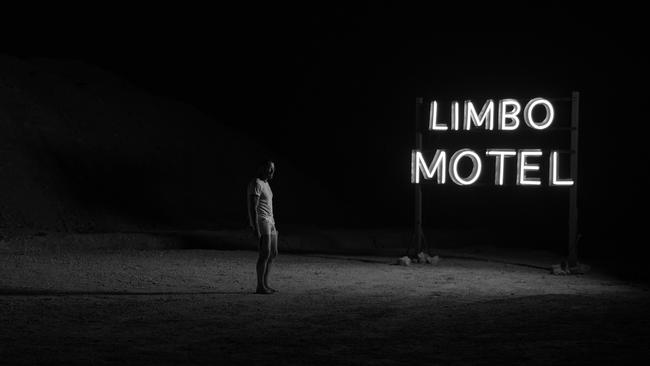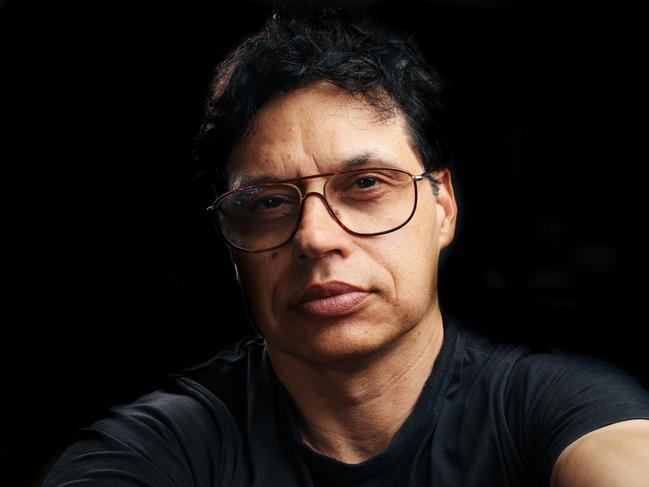Simon Baker stars in Ivan Sen’s crime thriller Limbo
Ivan Sen has created a moody outback noir, with Simon Baker almost unrecognisable as a heroin-using detective.

Ivan Sen’s new film, Limbo, is a moody outback noir, shot among the dirt mounds that surround Coober Pedy in South Australia.
It stars Simon Baker, trimmed down, shorn of his blond locks and almost unrecognisable as a heroin-using detective, Travis Hurley, who comes to the remote town to investigate the cold case death of an Indigenous girl 20 years earlier.
Such was Sen’s almost obsessive attention to the mood and look of the film that he did much of the behind-the-camera work himself.
He wrote, directed, co-produced, shot the stunning visuals, edited, did the casting, composed the music and created the production design for Limbo, including finding many of the props, like the all-important car, a Dodge Phoenix.
“No one understands how important things are, except for me,” Sen says. “I’ve got to chase, I’ve got to push. So you do it yourself.”
Along with Rolf de Heer’s The Survival of Kindness, Limbo was a standout at the Berlin International Film Festival in February.
The son of a Gamilaroi mother and a German-Hungarian father, Sen, 51, recalls how his first semi-autobiographical film, 2002’s Beneath Clouds, was part of a big push to reflect on Aboriginal identity in Australian films. His other work includes Toomelah (2011), Mystery Road (2013) and Goldstone (2016).
In Limbo, the hard-boiled Travis thinks he can solve the mystery and make a quick escape. Yet he becomes more involved in the case than he expected, connecting with the victim’s brother Charlie (Rob Collins) and his estranged sister Emma (Natasha Wanganeen) and her kids.

He meets other reluctant witnesses who admit they lied during the original investigation, as well as a potential suspect, Joseph, played by Nicholas Hope from de Heer’s Bad Boy Bubby.
“The story has come from many examples around Australia,” Sen explains. “In almost every town where there’s been a crime against an Indigenous female, usually the police response has been very slow. This has also happened within my own family, so I wanted to highlight the Indigenous perspective of that lack of engagement.
“I also wanted to do that with the white police officer, but with more layers. He’s looking for some kind of salvation and he’s stuck in a rut as well. So they’re stuck in this limbo situation and have a chance to kind of force each other into some kind of movement.”
The film is shot in wide-screen black and white to emphasise the landscape around Coober Pedy, including the white mounds that are the result of opal mining.

“There aren’t many places in Australia that have white ground, which sets itself tonally to transfer beautifully to black and white,” Sen says. “Shooting in black and white also funnels your focus on the character in the story. There’s a kind of distraction with colour.”
Sen had met Simon Baker some 20 years ago, and sent him the script. Baker is also a director, and Sen says they have similar ideas about film and direction.
“I mean, Simon isn’t someone who would initially pop up for this type of role, but he was just so into it,” Sen says. “He’s one of the sharpest human beings I’ve worked with.”
Limbo opens on May 18.

To join the conversation, please log in. Don't have an account? Register
Join the conversation, you are commenting as Logout